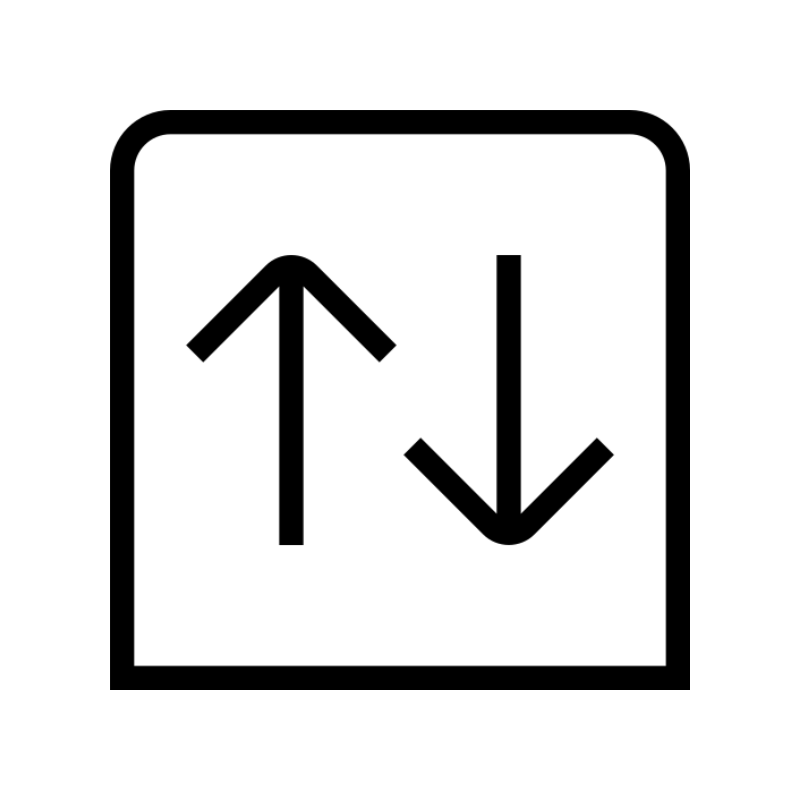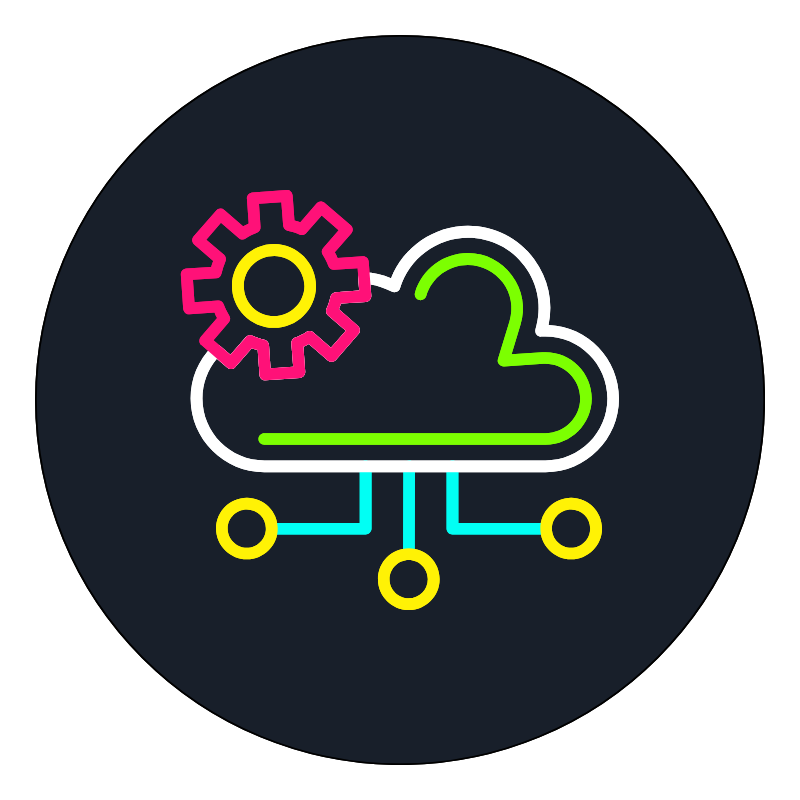Instagram has become the go-to platform for Filipino entrepreneurs looking to start their online business journey.
With over 22 million active Instagram users in the Philippines, the opportunity to reach potential customers has never been better.
I’ve spent years helping local entrepreneurs transform their Instagram accounts into profitable businesses, and I can tell you that the key to success lies in understanding the unique characteristics of the Filipino market.
Why Instagram specifically? Consider these statistics:
- 76% of Filipino Instagram users are aged 18-34
- 89% of users follow at least one business account
- 65% use Instagram to discover new products
- 44% make purchase decisions based on Instagram content
The platform’s visual nature, combined with the Filipino love for social media, creates the perfect storm for business success.
What You’ll Need to Sell on Instagram in the Philippines
To start selling on Instagram in the Philippines, you’ll need to prepare several essential elements:
Legal Requirements:
- DTI Business Registration (₱500-2,000)
- BIR Registration (Form 1901)
- Mayor’s Permit (costs vary by location)
- Special permits (if selling food, cosmetics, or regulated items)
Technical Setup:
Hardware:
- Smartphone with good camera (12MP minimum)
- Ring light for product photography (₱500-2,000)
- Laptop or tablet for content management
- Portable Wi-Fi device (backup internet)
Software and Apps:
- Photo editing apps
- Lightroom Mobile (Free version)
- Snapseed (Free)
- VSCO (Basic free, Premium ₱250/month)
- Content planning tools
- Later (₱1,000/month)
- Planoly (₱800/month)
- Facebook Business Suite (Free)
- Inventory management software
- Excel/Google Sheets (Free)
- Shopify (₱1,500/month)
- Simple POS apps (varies)
Financial Tools:
- E-wallet accounts
- GCash Business
- PayMaya
- Coins.ph
- Bank account (preferably digital banks)
- Payment gateway integration
- Accounting software (optional)
How to Sell on Instagram in the Philippines
1. Business Name Selection and Registration
Before you can start selling on Instagram in the Philippines, you need to establish your business legally. Let’s break this down into manageable steps.
Choosing Your Business Name:
The first critical decision is selecting a business name that works both legally and for marketing. Here’s how to do it right:
a). Research Availability
- Visit the DTI Name Verification System (https://bnrs.dti.gov.ph)
- Check at least 3-5 potential business names
- Verify social media username availability
- Search Google to avoid trademark issues
Pro Tip: Choose a name that’s easy to spell and remember for Filipino customers. Consider using Filipino words that resonate with your target market.
b). Name Structure Guidelines
Your business name should follow these rules:
- Must not be misleading
- Avoid special characters (except hyphen and period)
- Maximum of 120 characters
- Must not be identical to existing registered businesses
- Should reflect your business category
Example of Good vs. Bad Names
✅ Good: “Manila Beauty Hub” or “Pinoy Style Co.”
❌ Bad: “Nike Philippines” or “!!!Beauty!!!Shop!!!”
Legal Registration Process
DTI Registration
This is your first step into legitimate business operations.
Required Documents:
- Valid government ID
- Proof of address
- Business name reservation
- Registration fee (₱500-2,000)
Step-by-Step Process:
a. Visit the DTI BNRS website
b. Create an account
c. Fill out the application form
d. Pay the registration fee
e. Download your certificate
Timeline: Usually completed within 24 hours
BIR Registration
After DTI registration, proceed to BIR registration to handle your tax obligations.
Required Documents:
- DTI Certificate
- Valid ID
- Proof of address
- Barangay clearance
- Contract of lease (if applicable)
Process:
a. Visit your local BIR office
b. Get Form 1901
c. Submit required documents
d. Pay registration fee
e. Attend business tax seminar
f. Get your Certificate of Registration
Timeline: 3-5 business days
2. Set Up Your Instagram Business Account
Converting to a Business Account
This is crucial for accessing Instagram’s business features.
Detailed Steps:
a. Open Instagram Settings
b. Tap “Account”
c. Select “Switch to Professional Account”
d. Choose “Business”
e. Select your business category
f. Add contact information
g. Link to Facebook page
Pro Tip: Make sure your Facebook page is already set up before this step.
Profile Optimization
Bio Setup:
Your bio is your 150-character elevator pitch. Here’s how to maximize it:
[Brand Name]
📍 Based in [Location]
🛍️ What you sell
💫 Unique selling proposition
⚡ Call to action
📦 Shipping info
💌 Contact methodExample Bio:
Manila Beauty Hub
📍 Based in Makati
🛍️ Korean Skincare
💫 100% Authentic Products
📦 Nationwide Shipping
💌 DM or tap link to orderVisual Branding Elements
Profile Picture:
- Use your logo or brand symbol
- Minimum size: 320×320 pixels
- Keep it consistent across platforms
- Ensure it’s visible in small size
Highlight Covers:
Create at least 5 essential highlights:
- New Arrivals
- How to Order
- Reviews
- FAQs
- Shipping Info
3. Product Catalog Setup
Basic Setup Requirements:
- Ring light (₱500-2,000)
- White background (can use cartolina)
- Product props
- Smartphone with good camera
Photo Requirements
For each product, take:
- 3-5 different angles
- Size comparison shot
- Packaging photo
- Detail shots of important features
- In-use/styling photos
Photography Tips:
- Use natural daylight when possible (10am-2pm)
- Maintain consistent background
- Keep props minimal
- Edit photos to maintain color accuracy
- Use grid lines for composition
Product Information Organization
Create Product Information Sheets
Essential Information Template:
Product Name:
SKU:
Price:
Available Sizes:
Colors:
Material:
Care Instructions:
Weight:
Dimensions:
Stock Level:
Reorder Point:
Supplier Info:
Lead Time:Pricing Strategy:
Calculate your selling price using this formula:
Cost Price + Operating Expenses + Markup = Selling PriceExample Breakdown:
- Product Cost: ₱100
- Shipping: ₱20
- Marketing: ₱10
- Platform Fees: ₱5
- Desired Profit: ₱65
- Selling Price: ₱200
4. Set Up Your Order Process
Order Form Template
Create a Google Form with these fields:
- Full Name
- Complete Delivery Address
- Contact Number
- Email Address
- Order Details
- Payment Method
- Special Instructions
Inventory Tracking System
Create an Excel or Google Sheets with:
- Product SKU
- Current Stock
- Pending Orders
- Available Stock
- Reorder Point
- Supplier Information
Customer Database:
Track important customer information:
- Purchase History
- Preferences
- Delivery Instructions
- Special Notes
Payment System Setup
E-wallet Integration
Set up business accounts for:
- GCash (Recommended primary)
- PayMaya
- Coins.ph
Bank Accounts
Open accounts with:
- Traditional Banks (BDO, BPI)
- Digital Banks (ING, CIMB)
Payment Verification System
Create a system to track:
- Payment Screenshots
- Reference Numbers
- Payment Status
- Order Status
5. Shipping and Logistics
To sell on Instagram in the Philippines, you need a way to deliver products to your customers.
Here are some of the ways to achieve this.
Local Courier Options
Register business accounts with:
- J&T Express
- Ninja Van
- LBC
- Grab Express
- Lalamove
Shipping Rate Calculator
Create a shipping matrix based on:
- Weight
- Distance
- Delivery Speed
- Special Handling
Example Shipping Matrix:
Metro Manila:
- Standard (2-3 days): ₱100
- Express (1-2 days): ₱150
Provincial:
- Standard (3-5 days): ₱150-200
- Express (2-3 days): ₱200-250How to Thrive Selling on Instagram in the Philippines
Now that you know how to sell on Instagram in the Philippines, let us make sure you continue winning.
Creating an Effective Hashtag Strategy
Your hashtag strategy can make or break your visibility on Instagram in the Philippines. Let me break down the most effective approach based on my experience:
Location-Based Hashtags
Don’t just use #Philippines or #Manila. Instead, create a layered approach:
- Use specific city tags: #MakatiFinds #BGCFood #QCDeals
- Target regional tags: #VisayasHandmade #MindanaoArtists
- Combine with shopping terms: #ShopPH #OnlineSellerPH #TindahanPH
I’ve found that posts using location-specific hashtags get 70% more engagement than those using generic ones. Create a spreadsheet of 30-50 location hashtags and rotate through them.
Industry-Specific Tags
Your hashtags should tell a story about your product:
- Beauty products: #BeautyPH #GlowUpPH #SkincarePH
- Fashion: #OOTDph #PhilippineFashion #StylePH
- Food: #FoodPH #HomemadePH #FoodBusinessPH
Pro Tip: Study your top 3 competitors and note which hashtags they use on their most successful posts.
Mastering Filipino Engagement Techniques
Filipino customers value personal connection. Here’s how to build it effectively:
1. Response Time Management
Set up a system for quick responses:
- Morning check: 7-8 AM
- Lunch hour: 12-1 PM
- Evening engagement: 7-9 PM
Create response templates for common questions, but personalize them:
"Hi ka-[name]! Salamat sa interest sa [product]. Available pa po ito in [colors/sizes]. Would you like me to reserve one for you? 😊"2. Live Selling Success
Live selling is huge in the Philippine market. Here’s what works:
- Schedule lives during peak hours (7-9 PM weekdays)
- Announce lives 3 days in advance
- Create excitement with pre-sale teasers
- Use a moderator to handle comments
- Have a clear system for “mine” claims
Pro Tip: Keep a backup phone ready with mobile data in case of internet issues during live sessions.
Sales Optimization Strategies
Pricing Psychology for the Filipino Market
Understanding Filipino buying behavior is crucial for pricing strategy:
1. The “Pa-Mine” Culture
Leverage the Filipino love for reservations:
- Offer special “pre-mine” prices
- Create urgency with time-limited holds
- Use “Last piece!” announcements effectively
2. Bundle Pricing Strategy
Filipinos love deals. Create bundles that make sense:
- Buy 1 Get 1 at 50% off
- “Barkada Bundles” for group purchases
- “Payday Special” bundles for month-end
Example Bundle Structure:
Regular Prices:
Product A: ₱500
Product B: ₱400
Product C: ₱300
Bundle Price: ₱999 (Save ₱201)Customer Service Excellence
In the Philippines, customer service can make or break your business. Here’s how to excel:
1. Setting Up Customer Service Standards
Create a customer service framework:
Response Times:
- Chat/DM: Within 30 minutes (during business hours)
- Comments: Within 2 hours
- Inquiries: Same day
- Complaints: Immediate priority
Service Recovery Protocol
When issues arise, follow the HEAR method:
- Hear: Listen to the customer’s concern
- Empathize: Show you understand their frustration
- Act: Provide a solution
- Recover: Follow up after resolution
Example Recovery Message:
"Maraming salamat sa inyong patience, Ka-[Name]. We understand your frustration about [issue]. Here's what we'll do to make it right: [solution]. Plus, we'd like to offer you [compensation] for the inconvenience. Can we process this for you right away?"Creating Thumb-Stopping Content
Your content needs to stand out in a crowded Filipino feed:
1. Photo Content Strategy
Follow this ratio for your posts:
- 40% Product photos
- 30% Lifestyle/Usage content
- 20% Behind-the-scenes
- 10% User-generated content
Photo Requirements:
- Resolution: Minimum 1080×1080
- Lighting: Bright and clear
- Style: Consistent preset/filter
- Text: Minimal but clear pricing
2. Stories Strategy
Create daily stories following this pattern:
- Morning: Good morning/New arrivals
- Afternoon: Product features/Tips
- Evening: Q&A/Engagement/Sales updates
Community Building
Building a loyal community is crucial in the Philippines:
1. Creating Brand Advocates
Turn customers into ambassadors:
- Feature customer photos
- Create a points system
- Offer exclusive member prices
- Host member-only lives
2. Engagement Activities
Regular engagement activities keep your community active:
- Weekly giveaways
- Monthly member challenges
- Quarterly mega-sales
- Annual anniversary events
Example Community Calendar:
Weekly:
- Monday: New Arrivals
- Wednesday: Member Spotlight
- Friday: Live Selling
- Sunday: Week Ahead Preview
Monthly:
- 1st Week: Giveaway
- 15th: Payday Sale
- Last Weekend: Member-Exclusive SaleSeasonal Marketing Calendar
Align your marketing with Filipino shopping seasons:
Major Shopping Seasons:
- January: Post-Holiday Sales
- February: Valentine’s
- March-April: Summer
- May: Back-to-School
- August: Ghost Month (Plan accordingly)
- September-December: Christmas Season
Plan content and promotions around these periods:
Christmas Season Timeline:
- September: Early bird previews
- October: Pre-holiday bundles
- November: Black Friday/11.11
- December: 12.12 and Christmas rushCommon Mistakes to Avoid When Selling on Instagram in the Philippines
1. Inventory Management Failures
One of the biggest downfalls of new Instagram sellers in the Philippines is poor inventory management. Here’s what commonly goes wrong and how to avoid it:
Overbuying Stock
Many new sellers get excited by supplier MOQs (Minimum Order Quantities) and bulk discounts, leading to:
- Tied up capital in slow-moving items
- Storage issues
- Expired/damaged products
- Cash flow problems
Solution:
Start with a lean inventory model:
Initial Stock Formula:
- Fast-moving items: 2 weeks supply
- Regular items: 1 month supply
- Test items: 5-10 pieces onlyPoor Tracking Systems
Many sellers rely on memory or basic notes, leading to:
- Double-sold items
- Stockouts during live selling
- Missed reorder points
- Inventory discrepancies
Solution:
Implement a proper inventory system:
Daily Inventory Routine:
1. Morning count
2. Update spreadsheet
3. Check reorder points
4. Reconcile after sales
5. Evening final count2. Financial Management Errors
Mixed Personal and Business Finances
This is perhaps the deadliest mistake for small businesses. Here’s what typically happens:
The Scenario:
Monday: Received payment ₱5,000
- Used ₱2,000 for personal expense
- Can't remember if you included shipping fee
- Unsure about actual profit
Result: Confused accounting, tax issuesThe Solution:
Proper Financial Structure:
1. Separate business account
2. Daily sales recording
3. Weekly reconciliation
4. Monthly profit calculation
5. Quarterly tax preparationPricing Strategy Mistakes
Many sellers underprice their products without considering all costs:
Common Oversight Example:
Product Cost: ₱100
Selling Price: ₱150
Forgotten Costs:
- Packaging: ₱10
- Shipping: ₱20
- Marketing: ₱15
- Platform fees: ₱5
- Time cost: ₱20
Real Cost: ₱170
Result: ₱20 loss per sale3. Content and Posting Errors
Inconsistent Posting Schedule
This is a major engagement killer. Here’s what not to do:
Bad Posting Pattern:
Week 1: 10 posts
Week 2: 0 posts
Week 3: 2 posts
Week 4: 15 posts
Result: Algorithm deprioritizes your contentCorrect Posting Structure:
Monday-Friday: 1-2 feed posts
Daily Stories: 5-7 stories
Weekly Live: 1 scheduled session
Monthly Content Calendar: Plan aheadPoor Photo Quality
Common photo mistakes that hurt sales:
What Not to Do:
- Blurry images
- Inconsistent lighting
- Cluttered backgrounds
- Wrong size/resolution
- Heavy filter use
Professional Standards:
Photo Requirements:
- Resolution: 1080x1080 minimum
- Lighting: Natural or ring light
- Background: Clean and consistent
- Editing: Light touch-ups only
- Multiple angles: 3-5 per product4. Customer Service Failures
Slow Response Times
Filipino customers expect quick responses. Here’s what happens when you’re too slow:
Typical Scenario:
Customer: Inquires about product (2pm)
Seller: Responds next day
Result: Customer already bought elsewhereResponse Time Standards:
Business Hours (9am-9pm):
- Simple queries: 15-30 minutes
- Complex questions: 1 hour max
- Order status: 2 hours max
- Complaints: Immediate priorityUnclear Policies
Failing to set clear policies leads to disputes. Common issues:
Problem Areas:
Returns: No clear timeframe
Exchanges: Process not explained
Shipping: Delays not communicated
Payment: Methods not specifiedSolution:
Create a comprehensive policy highlight:
Policy Structure:
1. Order Process
2. Payment Terms
3. Shipping Details
4. Return Policy
5. Exchange Guidelines5. Instagram Feature Underutilization
Ignoring Analytics
Many sellers don’t track their performance:
Key Metrics to Monitor:
Weekly Check:
- Reach and Impressions
- Profile Visits
- Website Clicks
- Story Views
- Post EngagementAction Items:
Monthly Review:
1. Best performing posts
2. Peak engagement times
3. Content type analysis
4. Hashtag performance
5. Sales correlation6. Security and Account Protection
Poor Account Security
Common security mistakes:
Dangerous Practices:
- Using simple passwords
- Sharing account access
- No two-factor authentication
- Using public WiFi for transactions
Security Checklist:
Monthly Security Routine:
1. Password update
2. Login activity check
3. Connected apps review
4. Backup contact method verification
5. Payment security auditRecovery Strategies
When mistakes happen, here’s how to recover:
Immediate Action Plan:
1. Acknowledge the issue
2. Communicate with affected customers
3. Document the problem
4. Implement solution
5. Follow up and prevent recurrenceCustomer Recovery Message Template:
"Dear valued customer,
We apologize for [specific issue]. We understand this has affected your experience with us and we're taking immediate steps to resolve it by [solution].
As a gesture of our commitment to making things right, we'd like to offer [compensation/solution].
Thank you for your understanding and continued support.
Best regards,
[Your Business Name]"Remember, mistakes are inevitable, but how you handle them defines your business’s reputation in the Philippine market.
Common Issues When Selling on Instagram in the Philippines (and Solutions)
1. Instagram App Issues
When your Instagram app starts acting up during crucial business hours, here’s your action plan:
Immediate Solutions:
Step-by-Step Fix:
1. Force stop the app
2. Clear cache (Settings > Apps > Instagram)
3. Check internet connection
4. Update app if available
5. Restart devicePrevention Strategy:
Weekly Maintenance:
1. Clear cache every Sunday
2. Update app when available
3. Free up 1GB minimum phone storage
4. Check app permissions
5. Test all features brieflyLive Selling Technical Issues
Live selling is crucial for Philippine businesses, but technical problems can derail your sales:
Common Live Issues and Fixes:
- Connection Drops
Before Live:
- Test internet speed (minimum 10Mbps)
- Prepare backup mobile data
- Have second device ready
- Test audio and video
- Close unnecessary apps- Audio Problems
Quick Fixes:
1. Use external microphone
2. Check audio permissions
3. Test audio levels
4. Position away from noise
5. Have backup earphones ready2. Payment Processing Issues
One of the most sensitive issues in Philippine e-commerce is payment processing:
Common Scenarios and Solutions:
- Unverified Payments
Verification Process:
1. Request screenshot with:
- Reference number
- Date and time
- Amount
- Sender info
2. Cross-check with bank app
3. Wait 15 minutes for system update
4. Confirm with customer
5. Document transaction- Failed Transfers
Troubleshooting Steps:
1. Check recipient details
2. Verify transaction limits
3. Contact bank support
4. Document error messages
5. Guide customer to alternatives3. Order Management Issues
Missing or Incorrect Orders. This is a common problem that requires systematic handling:
Resolution Process:
Step 1: Information Gathering
- Order reference number
- Purchase date
- Payment proof
- Shipping details
- Customer complaint details
Step 2: Investigation
- Check inventory records
- Review shipping status
- Verify payment details
- Check packing records
- Review communication history
Step 3: Resolution
- Identify error point
- Propose solution
- Implement fix
- Compensate customer
- Document caseShipping Delays. A major concern in Philippine e-commerce:
Delay Management System:
1. Prevention:
- Partner with reliable couriers
- Set realistic timeframes
- Track all shipments
- Maintain courier contacts
- Have backup options
2. When Delays Occur:
- Track package location
- Contact courier
- Update customer
- Offer compensation
- Document for future reference4. Communication Issues
Managing high volumes of messages is challenging:
Message Management System:
Priority Levels:
1. Urgent (Respond within 30 minutes):
- Payment issues
- Wrong deliveries
- Product complaints
- Live selling queries
2. High Priority (Within 2 hours):
- Order status inquiries
- Stock availability
- Price inquiries
- Shipping questions
3. Regular (Within 24 hours):
- General inquiries
- Feedback
- Suggestions
- Future stock questionsResponse Management System:
Daily Schedule:
Morning (8-10am):
- Check overnight messages
- Sort by priority
- Send batch responses
- Update order status
Afternoon (2-4pm):
- Follow up pending issues
- Process new inquiries
- Update shipping status
- Send tracking numbers
Evening (7-9pm):
- Final response round
- Schedule next day tasks
- Update FAQs
- Set auto-replies5. Stock Management Problems
Real-Time Inventory Tracking.
Keeping track of stock during high-volume sales:
Inventory Management System:
Live Selling Inventory Control:
1. Pre-live preparation:
- Update stock counts
- Prepare inventory sheet
- Set minimum quantities
- Mark reserved items
- Ready backup stock
2. During live:
- Real-time deduction
- Monitor hot items
- Track pending payments
- Note cancelled orders
- Update availability
3. Post-live reconciliation:
- Count remaining stock
- Update system
- Process reservations
- Order replacements
- Analyze performance6. Quality Control Issues
Product Complaints Handling
Managing quality-related issues:
Quality Issue Resolution Process:
Step 1: Documentation
- Photo evidence
- Purchase details
- Nature of defect
- Customer report
- Supplier information
Step 2: Analysis
- Assess damage
- Determine cause
- Check batch number
- Review similar cases
- Consult supplier
Step 3: Resolution
- Offer replacement
- Process return
- Issue refund
- Update policies
- Implement prevention7. Data Loss Prevention
Protecting crucial business information:
Backup System:
Daily Backup:
1. Customer database
2. Order history
3. Product information
4. Financial records
5. Message threads
Weekly Backup:
1. Analytics reports
2. Content calendar
3. Marketing materials
4. Supplier contacts
5. Process documentation
Monthly Backup:
1. Performance reports
2. Strategy documents
3. Customer feedback
4. Best practices
5. Training materials8. Emergency Response Plan
Preparing for major disruptions:
Emergency Protocol:
Communication Plan:
1. Customer notification template
2. Staff instructions
3. Supplier alerts
4. Courier updates
5. Social media announcements
Recovery Steps:
1. Assess situation
2. Activate backup systems
3. Contact key partners
4. Update customers
5. Resume operations
Prevention Measures:
1. Regular system checks
2. Staff training
3. Backup testing
4. Process documentation
5. Emergency fundAlternatives To Selling on Instagram in the Philippines
You’re hustling, trying to make a name for yourself in the Philippine market.
You’ve heard the hype about Instagram, the endless scroll of perfectly curated feeds, and the “influencers” raking in the cash.
But maybe you’re looking for something different, something more.
Maybe you’re tired of algorithm changes, or maybe you just want to diversify your sales channels.
1. Sell on Facebook
Before Instagram was even a glimmer in Zuckerberg’s eye, Facebook was already connecting people and businesses. And guess what? It’s still a powerhouse for online selling in the Philippines.
Why Facebook?
- Massive reach: With over 80 million users in the Philippines, Facebook gives you access to a huge potential customer base. That’s a lot of eyeballs on your products!
- Diverse engagement: Facebook offers various ways to connect with your audience:
- Facebook Pages: Create a dedicated page for your business, showcasing your products, sharing updates, and engaging with customers.
- Facebook Groups: Join or create groups related to your niche. This is a goldmine for building community and connecting with potential buyers.
- Facebook Marketplace: List your products directly on Marketplace, tapping into a ready-to-buy audience.
- Facebook Ads: Reach a highly targeted audience with laser-focused advertising campaigns.
Advice:
- Optimize your Facebook Page: Treat your page like a storefront. Use high-quality images, write compelling descriptions, and post engaging content regularly.
- Engage with your audience: Respond to comments, answer questions, and participate in discussions. Build relationships, not just transactions.
- Leverage Facebook Groups: Don’t just spam groups with product links. Provide value, participate in conversations, and build trust before promoting your offerings.
- Experiment with Facebook Ads: Start with small budgets and target specific demographics and interests. Track your results and refine your campaigns for maximum ROI.
Top Tools:
- Facebook Business Suite: Manage your Page, ads, and messages all in one place.
- Canva: Create eye-catching visuals for your Page and ads.
- Facebook Ads Manager: Create and manage your ad campaigns.
2. E-commerce Platforms
Want to create your own online empire?
E-commerce platforms are your foundation. These platforms provide the tools and infrastructure to build your own online store, giving you complete control over your brand and customer experience.
Why E-commerce Platforms?
- Brand ownership: You’re not just a seller on someone else’s platform; you’re building your own brand identity.
- Customization: Design your store to reflect your unique style and cater to your target audience.
- Flexibility: Offer a wide range of products, set your own prices, and run promotions on your terms.
- Scalability: As your business grows, your e-commerce platform can scale with you.
Advice:
- Choose the right platform: Consider your budget, technical skills, and specific needs.
- Shopify: Popular and user-friendly, great for beginners.
- WooCommerce: Powerful and flexible, ideal for businesses with specific requirements.
- Lazada and Shopee: Dominant players in the Philippine market, offering access to a large customer base.
- Invest in a professional design: Your website is your online storefront. Make a good first impression.
- Optimize for mobile: Most Filipinos access the internet on their smartphones. Ensure your store is mobile-friendly.
- Provide excellent customer service: Respond to inquiries promptly and resolve issues efficiently.
Top Tools:
- Shopify: All-in-one e-commerce platform.
- WooCommerce: WordPress plugin for building online stores.
- Lazada: Leading e-commerce platform in Southeast Asia.
- Shopee: Another popular e-commerce platform in the Philippines.
3. Carousell
Carousell is a mobile-first classifieds platform that has taken the Philippines by storm.
It’s a haven for bargain hunters and sellers looking for a more direct, community-driven approach.
Why Carousell?
- Hyperlocal focus: Connect with buyers in your area, making it ideal for selling locally sourced or secondhand goods.
- Easy to use: Listing your items is a breeze, even for beginners.
- Built-in chat: Communicate directly with potential buyers, negotiate prices, and build relationships.
- Free to list: No listing fees, so you can maximize your profits.
Advice:
- Take high-quality photos: Showcase your products in the best possible light.
- Write detailed descriptions: Provide all the necessary information, including condition, size, and any relevant details.
- Be responsive: Answer inquiries promptly and be prepared to negotiate.
- Build a good reputation: Positive reviews and ratings will attract more buyers.
Top Tools:
- Carousell app: Available for iOS and Android.
- Photo editing apps: Enhance your product photos.
4. TikTok
TikTok isn’t just for dance challenges and viral trends.
It’s rapidly becoming a powerful platform for social commerce, especially in the Philippines, where it boasts a massive and engaged user base.
Why TikTok?
- Viral potential: Your product videos can reach millions of users organically if they tap into trending sounds or challenges.
- Engaging format: Short, attention-grabbing videos are perfect for showcasing your products in action.
- Young audience: Reach a younger demographic that’s highly active on the platform.
- Live shopping: Connect with your audience in real-time, answer questions, and drive sales through interactive live streams.
Advice:
- Create high-quality videos: Invest in good lighting and sound to make your videos stand out.
- Jump on trends: Use trending sounds and hashtags to increase your reach.
- Showcase your products creatively: Think outside the box and find unique ways to present your offerings.
- Engage with your audience: Respond to comments, answer questions, and participate in challenges.
Top Tools:
- TikTok app: Available for iOS and Android.
- Video editing apps: Create engaging and dynamic videos.
- TikTok Ads Manager: Run targeted ad campaigns to reach a wider audience.
5. Build Your Own Website
While e-commerce platforms offer a convenient solution, building your own website gives you ultimate control and flexibility. It’s a long-term investment that can pay off big time.
Why Your Own Website?
- Complete control: You own your platform and your data. No more algorithm changes or platform fees.
- Brand building: Create a unique online presence that truly reflects your brand identity.
- SEO opportunities: Optimize your website for search engines and attract organic traffic.
- Email marketing: Build an email list and connect with your customers directly.
Advice:
- Choose a reliable hosting provider: Your website needs a solid foundation.
- Invest in a professional design: First impressions matter. Make your website visually appealing and user-friendly.
- Create valuable content: Attract visitors and establish your expertise with blog posts, articles, and other resources.
- Optimize for SEO: Use relevant keywords, build high-quality backlinks, and follow best practices to improve your search engine rankings.
Top Tools:
- WordPress: Popular content management system.
- Bluehost: Reliable web hosting provider.
- Google Search Console: Monitor your website’s performance in search results.
Final Thoughts
Success in selling on Instagram in the Philippines requires a combination of proper planning, consistent execution, and continuous adaptation to market changes.
Remember these key points:
- Start with proper documentation
- Focus on quality content
- Build genuine relationships
- Provide excellent customer service
- Stay updated with trends
The Philippine market offers unique opportunities for Instagram sellers who understand local consumer behavior and preferences.
FAQs
How much capital do I need to start?
Minimum ₱20,000 recommended (₱5,000 for registration, ₱10,000 for inventory, ₱5,000 for marketing)
Do I need to register my business immediately?
Yes, it’s legally required to register with DTI and BIR before starting operations
How long before I can expect profits?
Typically 3-6 months for consistent profit, depending on niche and marketing efforts
What are the best products to sell?
Beauty products, fashion items, and gadget accessories perform well, but research your specific market
How do I handle shipping nationwide?
Partner with reliable courier services like J&T, LBC, or Ninja Van for nationwide coverage.
Read also:
 Web HostingCost-effective shared hosting solutions
Web HostingCost-effective shared hosting solutions Reseller HostingStart your own hosting business without tech hustle
Reseller HostingStart your own hosting business without tech hustle Affiliate ProgramEarn commission by referring customers to our platforms
Affiliate ProgramEarn commission by referring customers to our platforms cPanel HostingHosting powered by cPanel (Mostly user friendly)
cPanel HostingHosting powered by cPanel (Mostly user friendly) Windows HostingOptimized for windows based-applications and sites
Windows HostingOptimized for windows based-applications and sites Domain SearchFind and register available domain names in seconds
Domain SearchFind and register available domain names in seconds All DomainsExplore and register domain extensions across the world
All DomainsExplore and register domain extensions across the world Domain Transfermove your domain to us with zero downtime and full control
Domain Transfermove your domain to us with zero downtime and full control Whois LookupLook up domain ownership, expiry dates and registrar information
Whois LookupLook up domain ownership, expiry dates and registrar information .com DomainSecure the most recognized domain for global credibility
.com DomainSecure the most recognized domain for global credibility VPS HostingScalable virtual servers. Full root access. Faster speed.
VPS HostingScalable virtual servers. Full root access. Faster speed. Managed VPSNot a tech expert? Choose our fully managed VPS server.
Managed VPSNot a tech expert? Choose our fully managed VPS server. Dedicated ServersGet the full power and complete control of your own physical server.
Dedicated ServersGet the full power and complete control of your own physical server.
